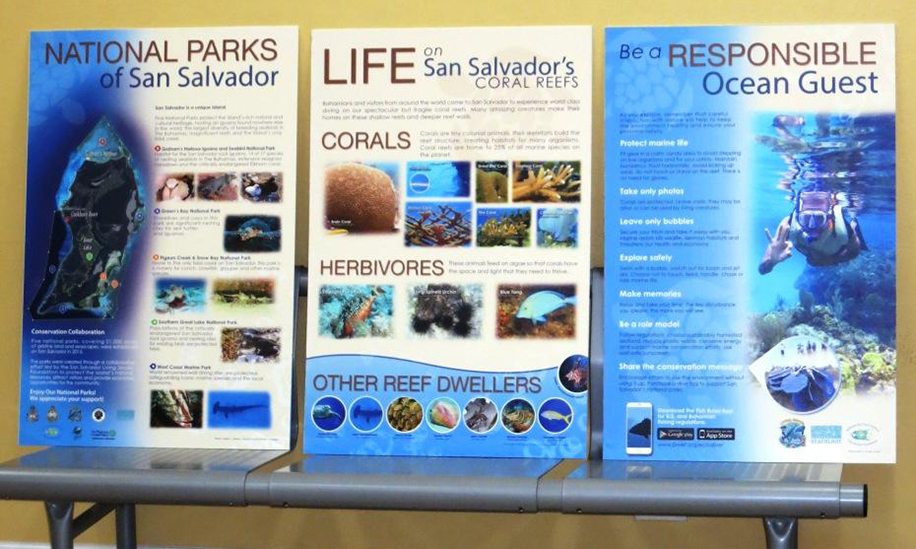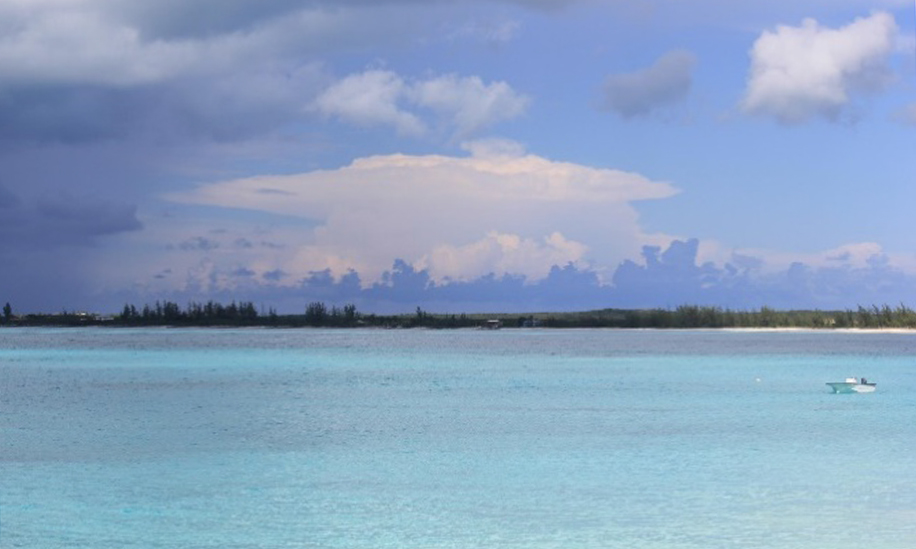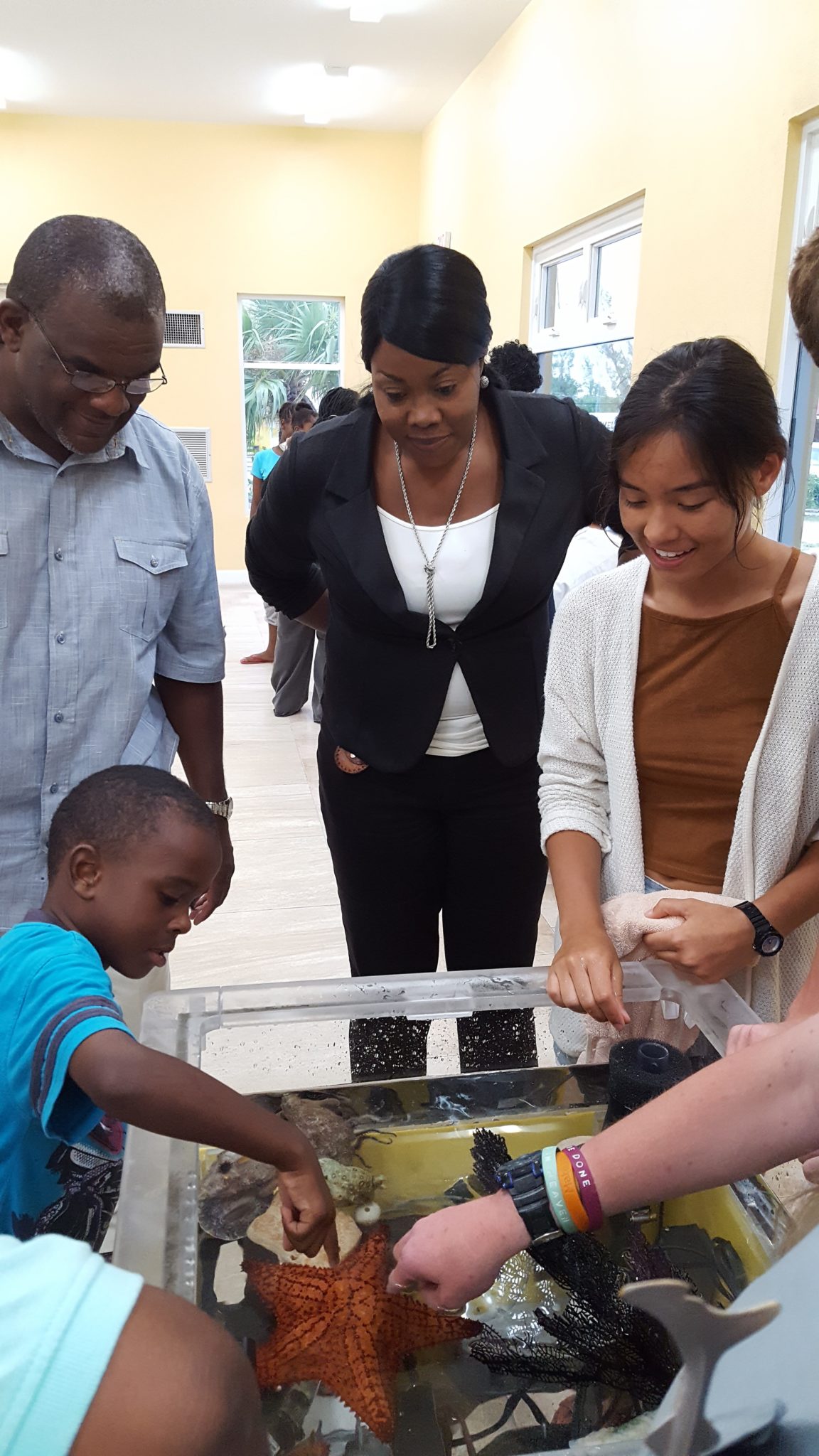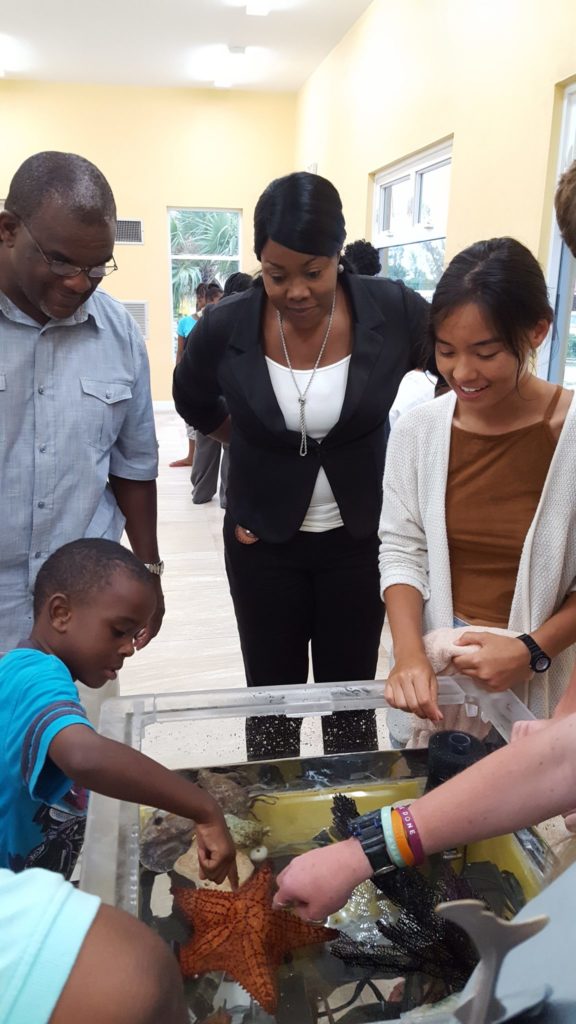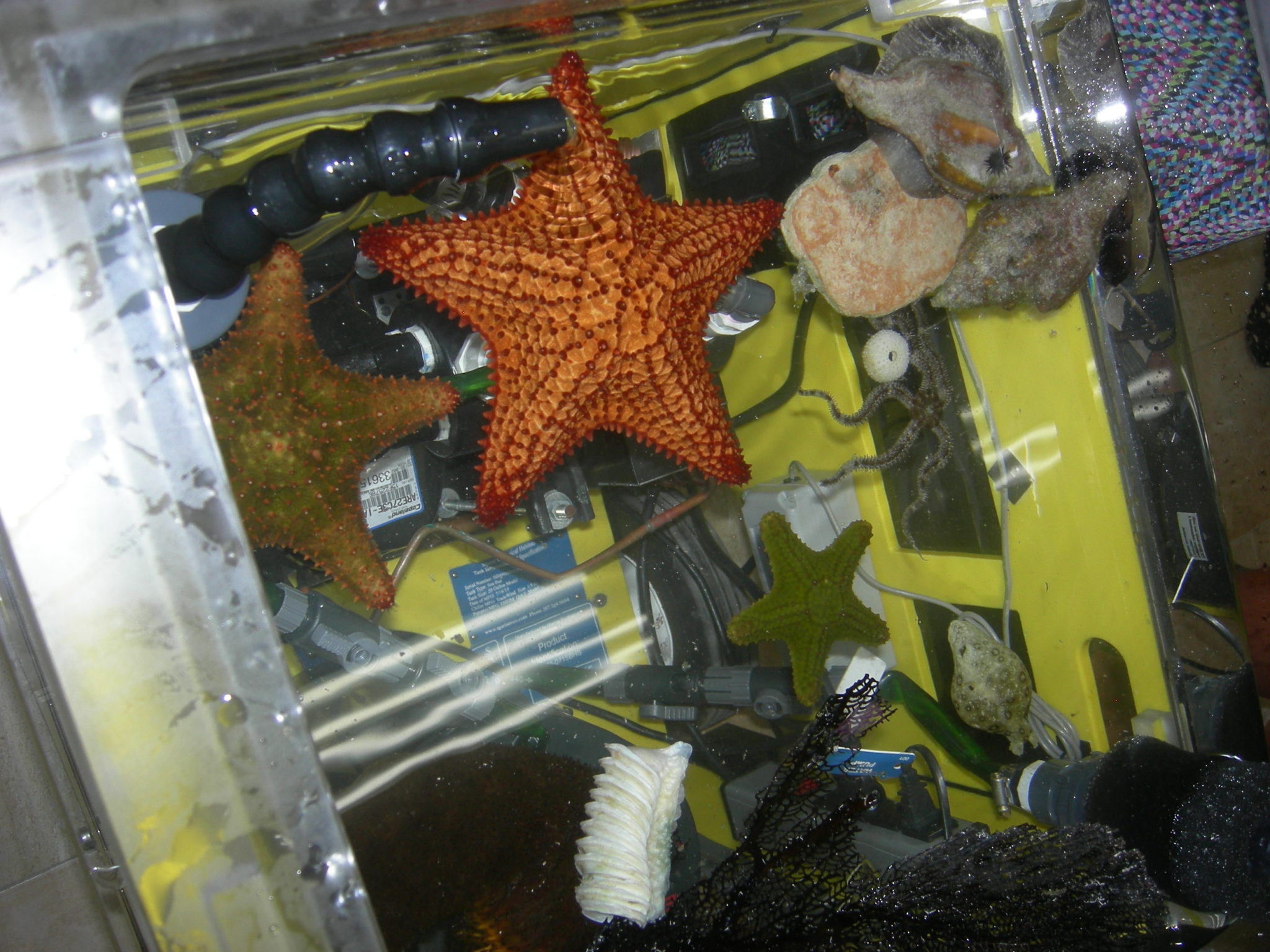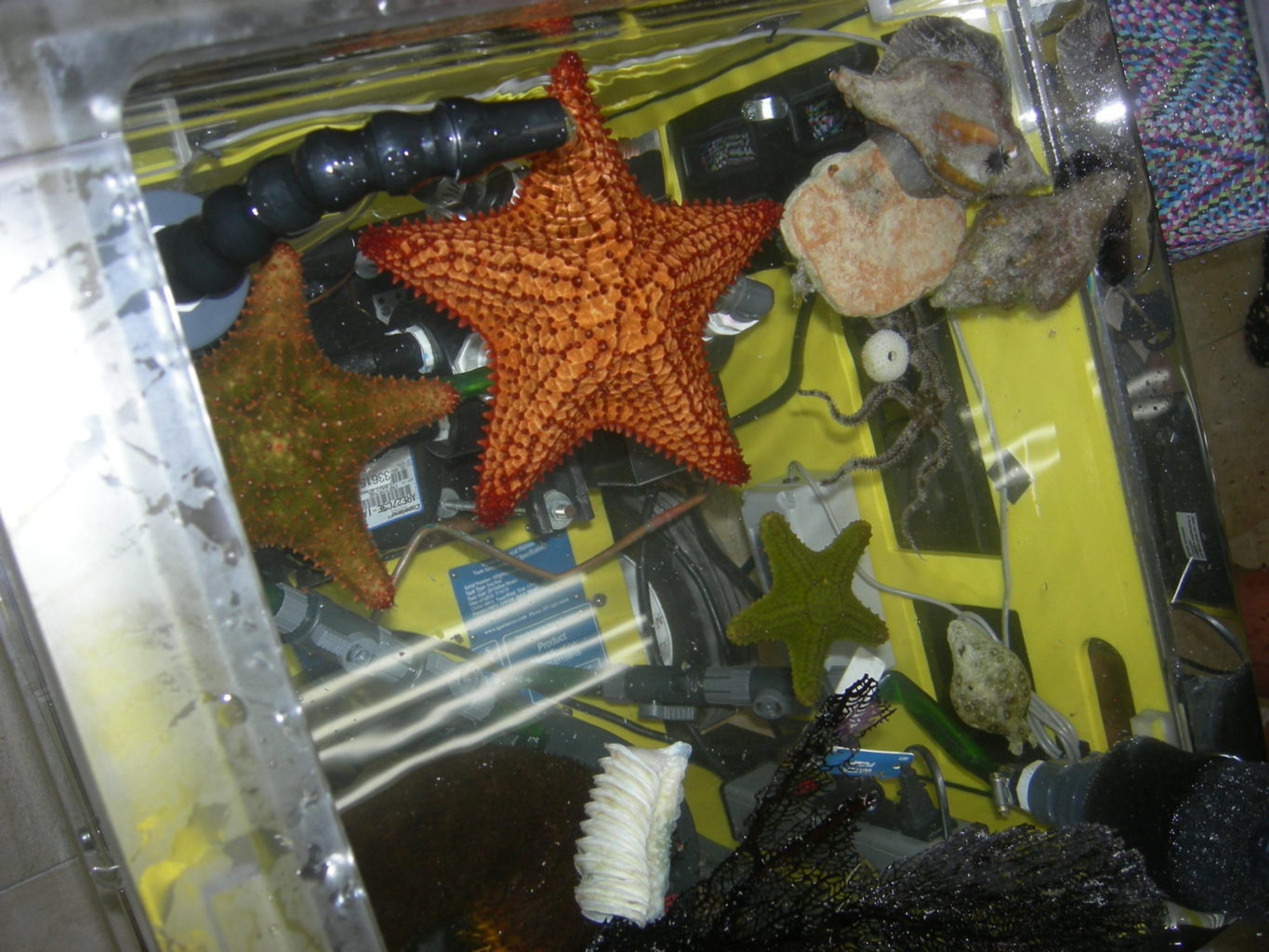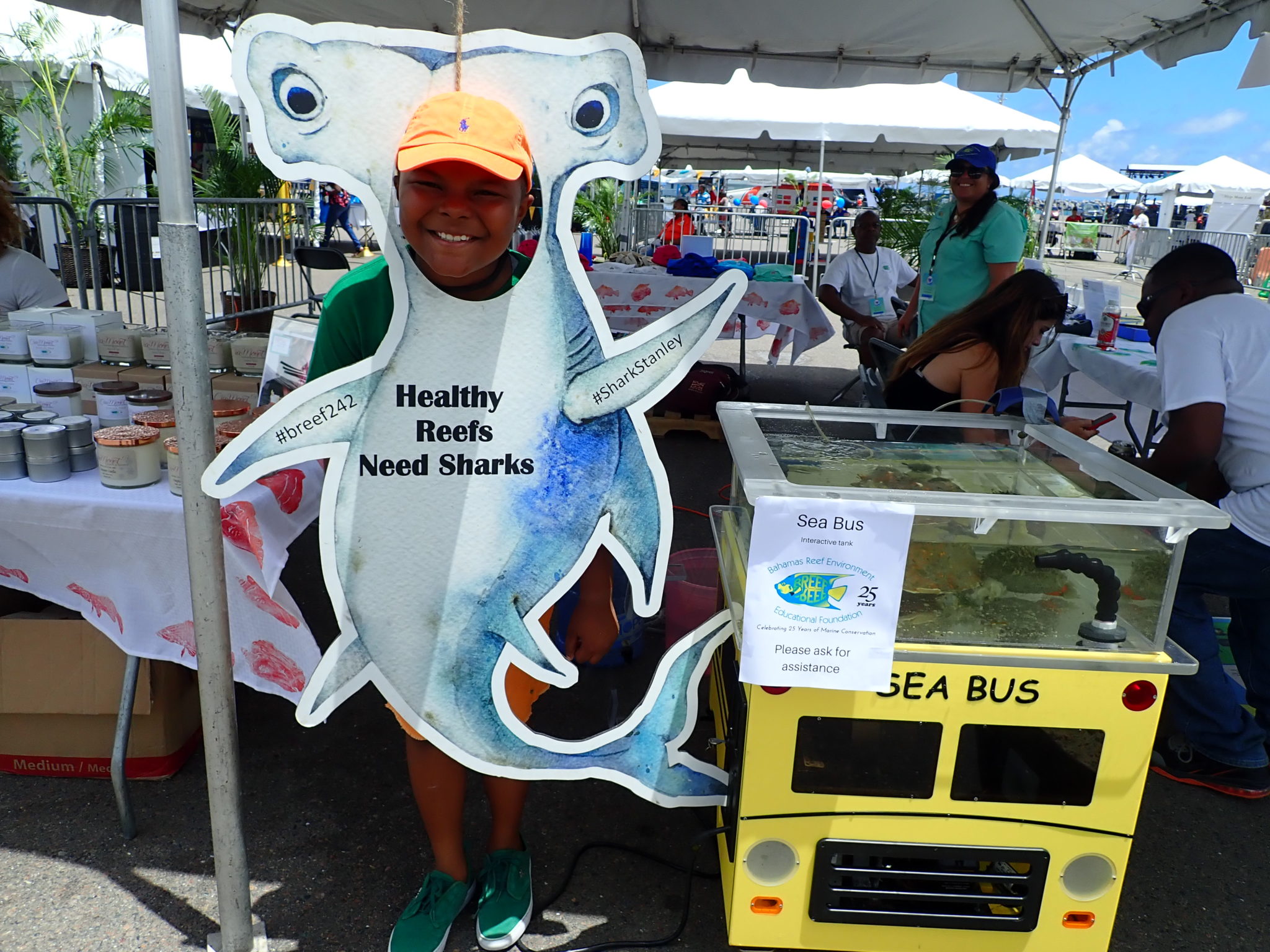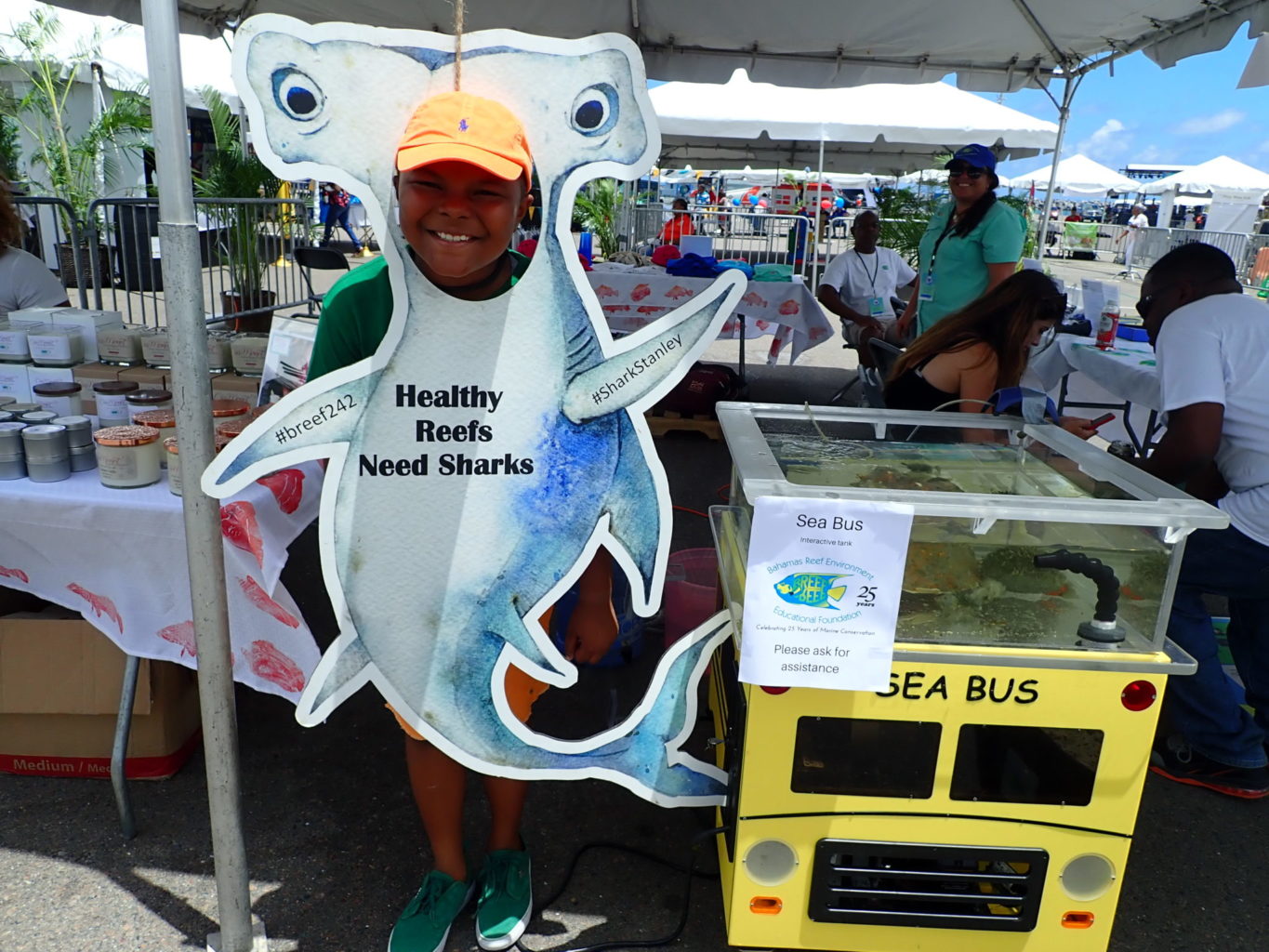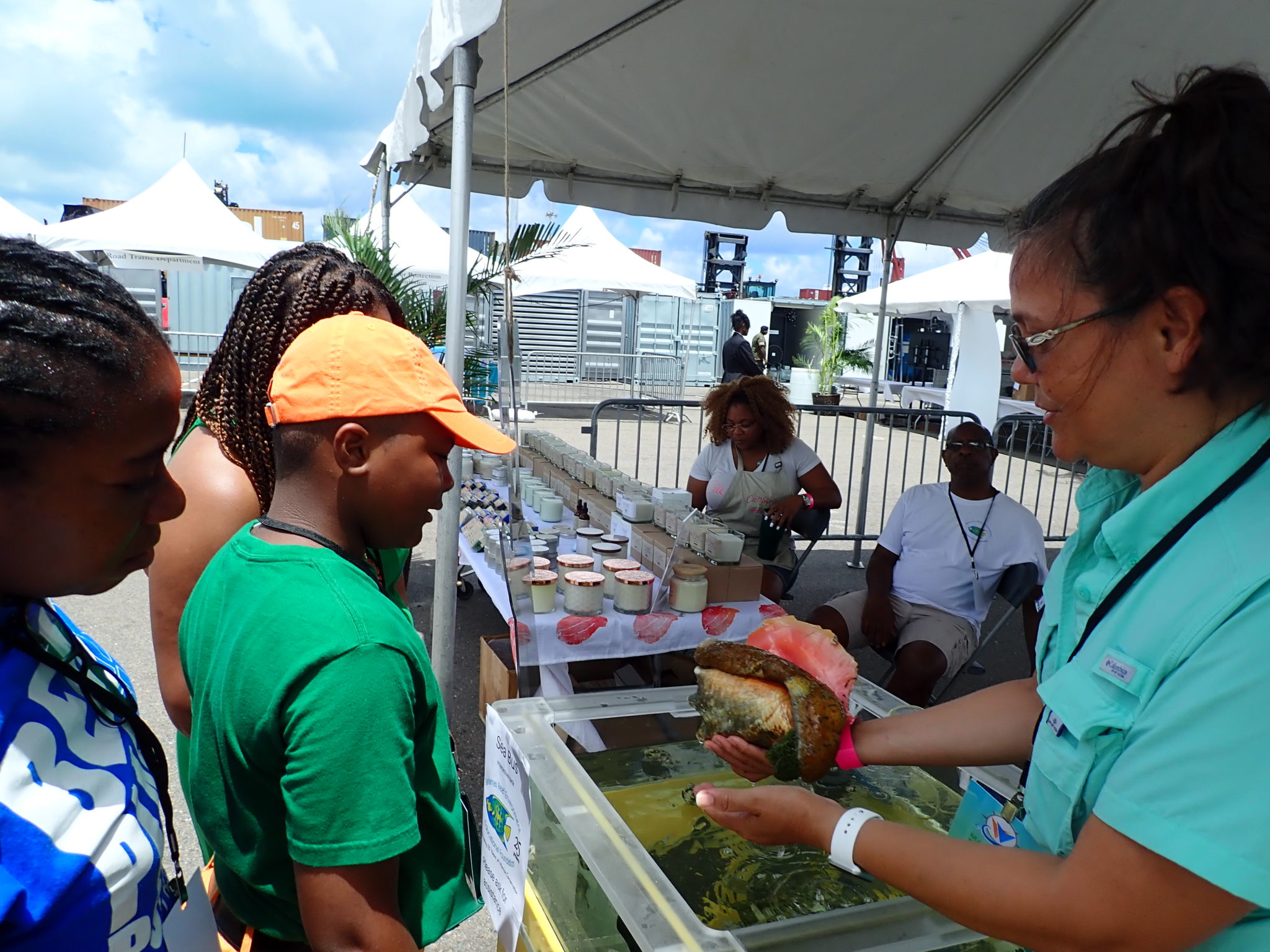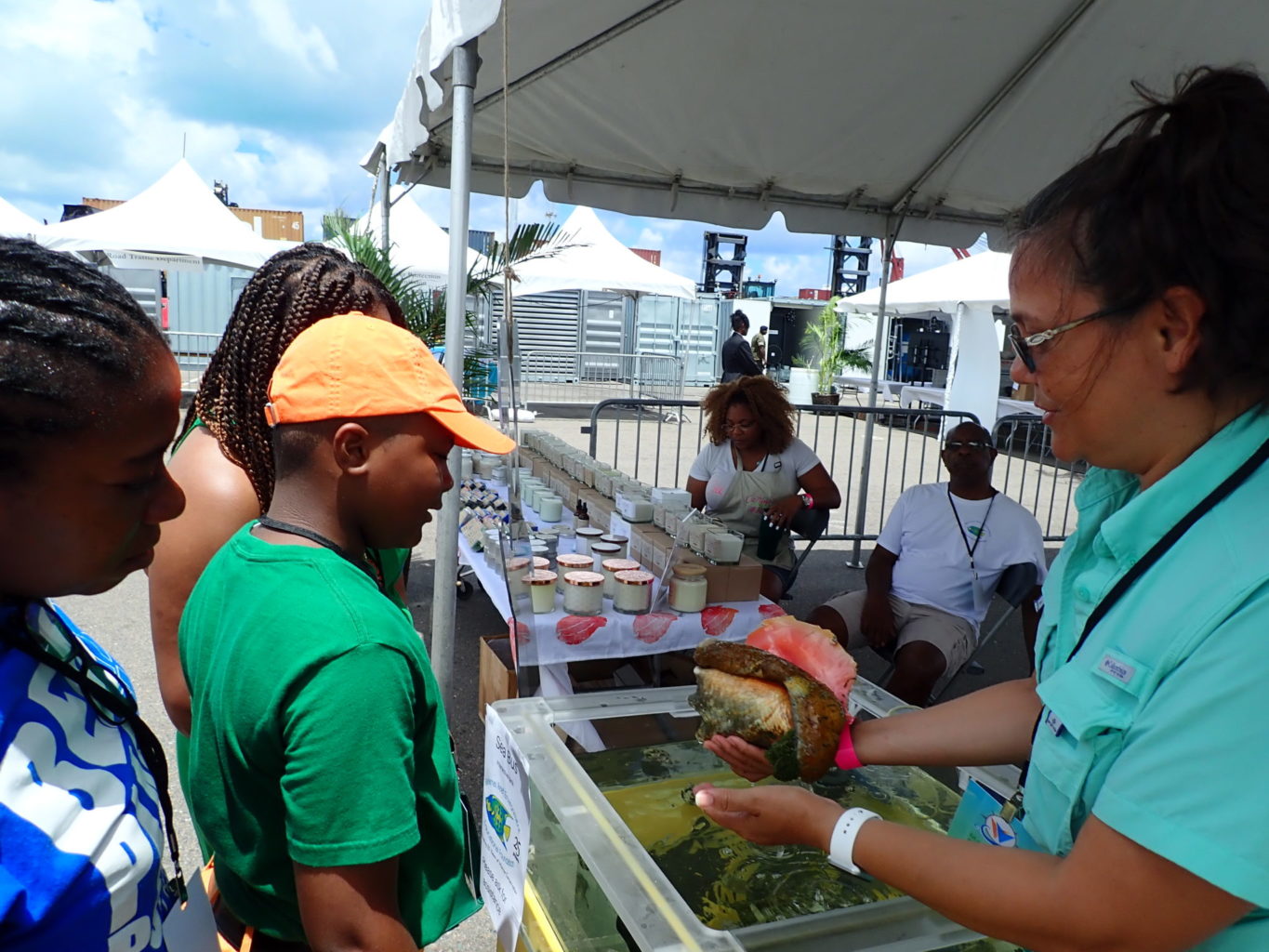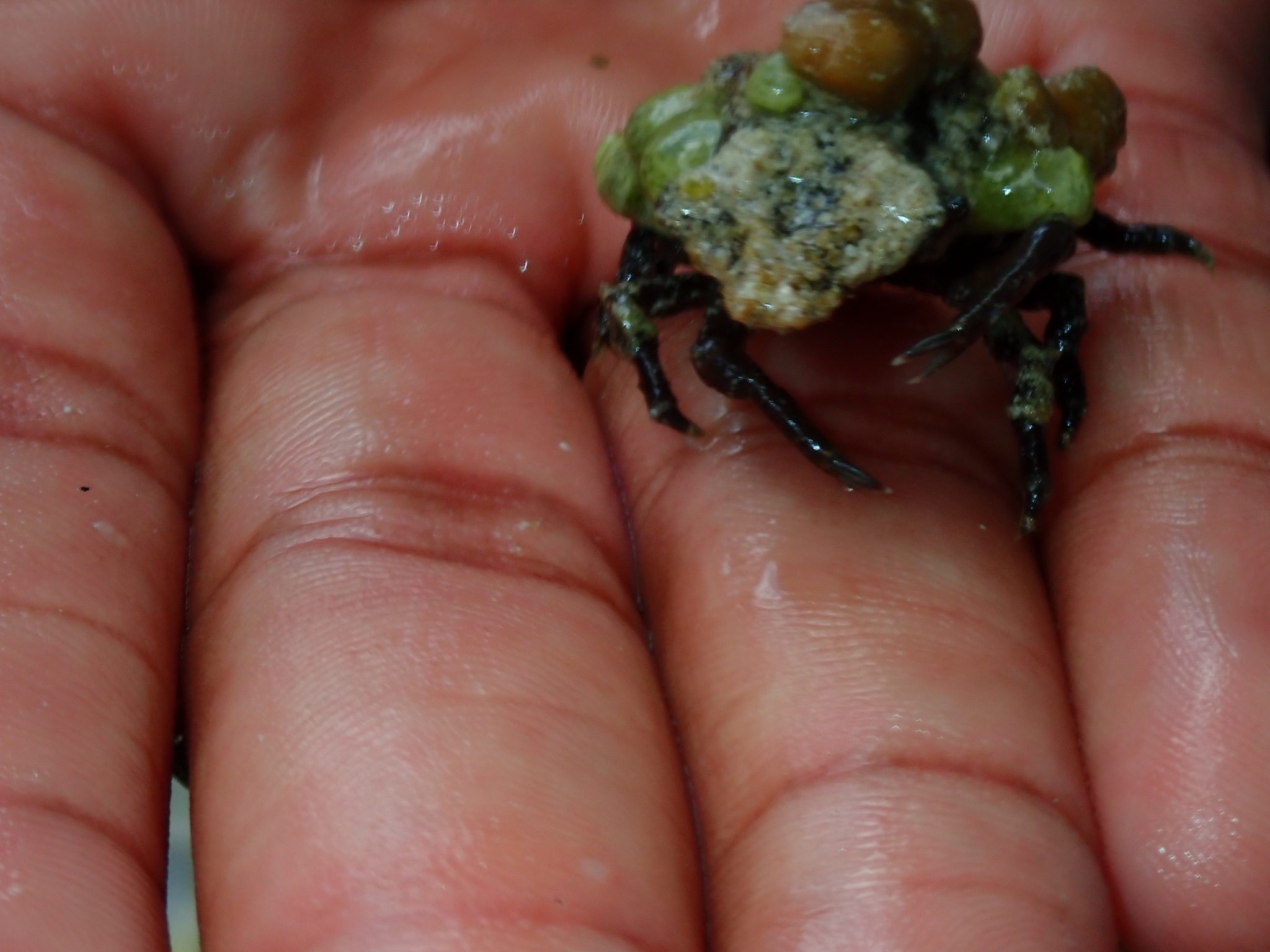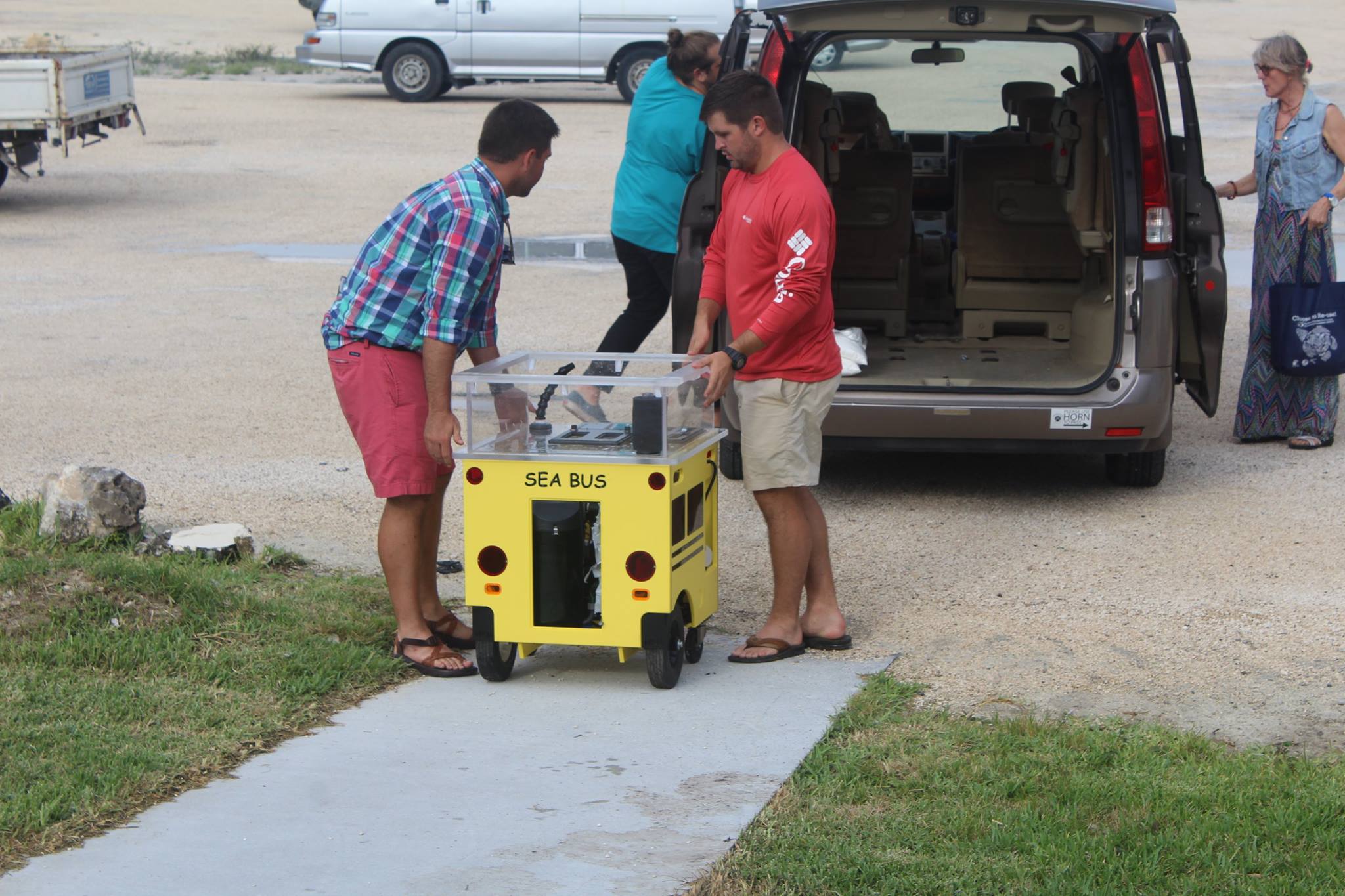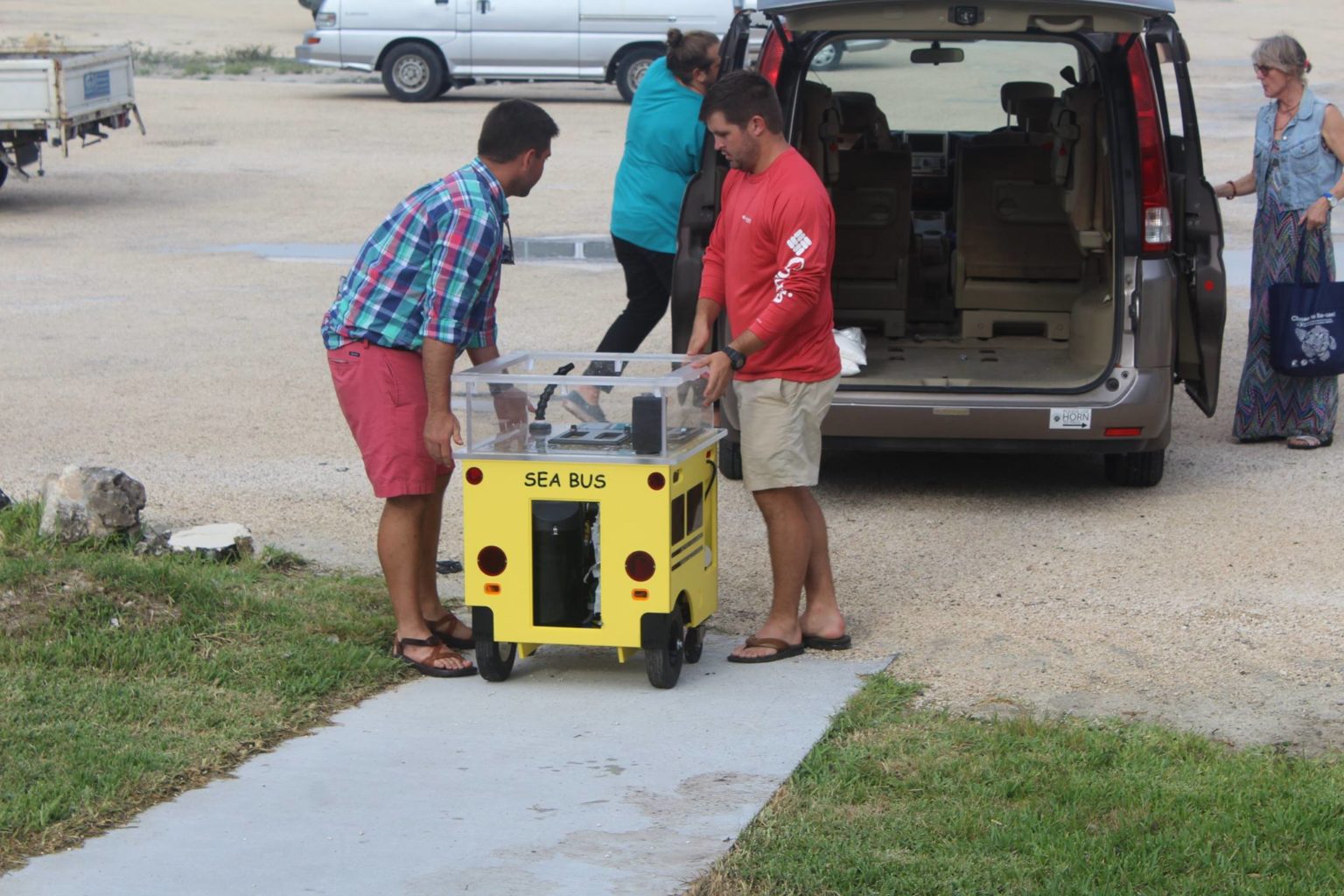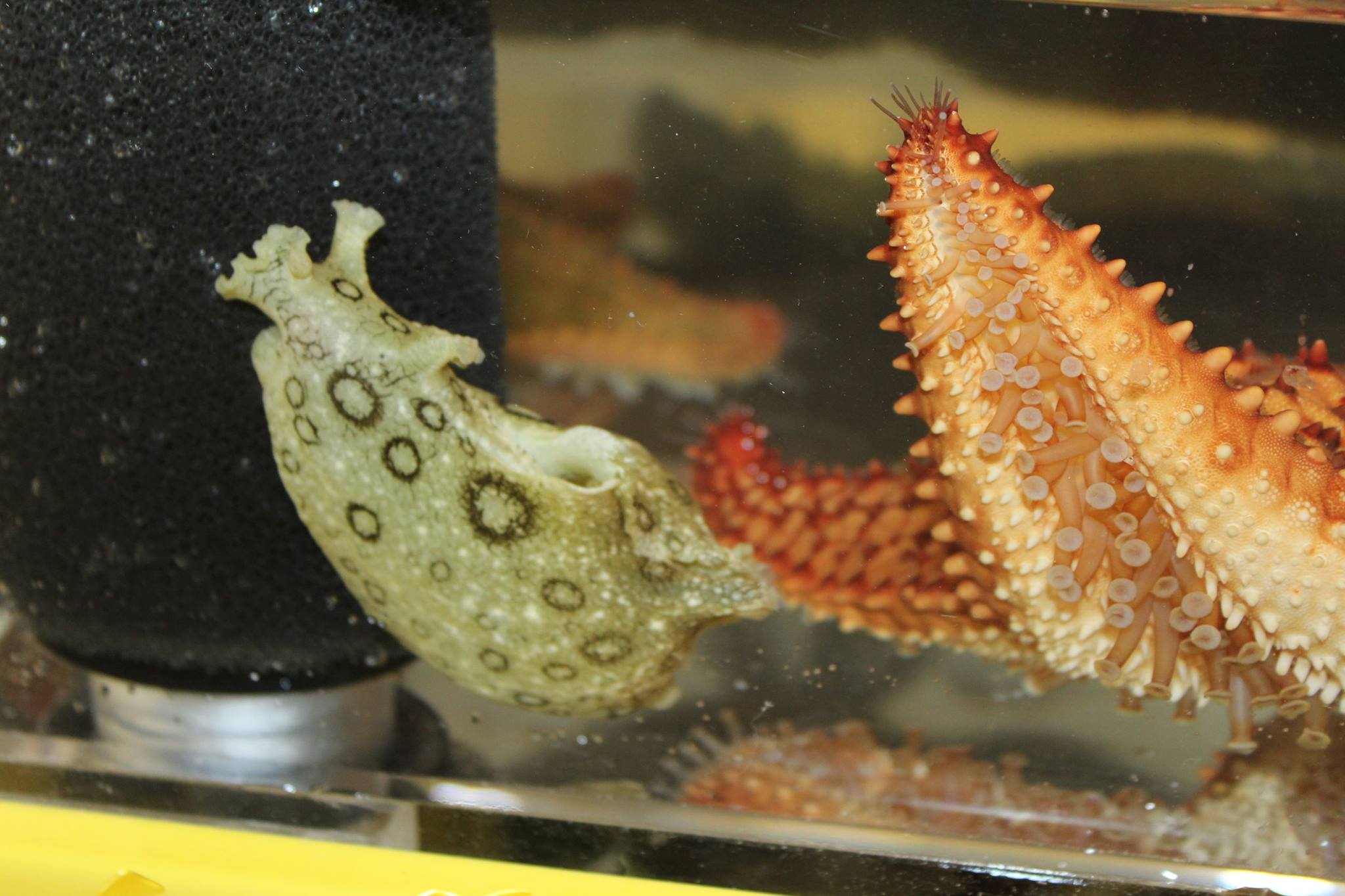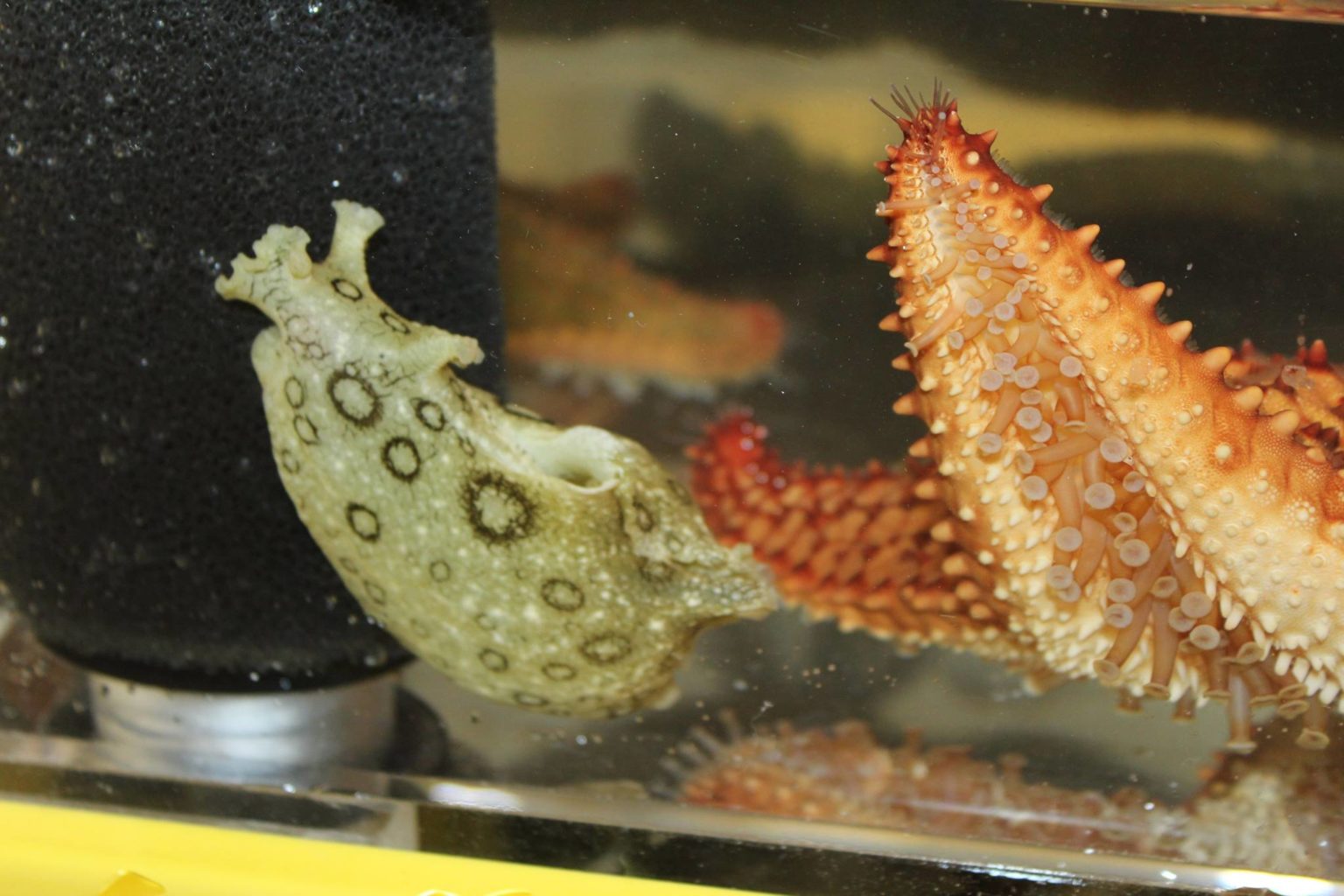Tourists flock to San Salvador Island’s 30 popular dive sites. The sites showcase a wide range of habitats, from elkhorn coral reefs to spectacular wall communities. Protected areas include habitat for the critically endangered San Salvador rock iguana (supported by a Seacology-funded iguana headstart facility in 2011), mangroves, and seagrass beds. They also boast the greatest diversity of seabirds of anywhere in the Bahamas. Local NGOs and community members are pressing the government to declare the area a National Land and Sea Park System.
Working with the Bahamas Reef Environment Education Foundation, (BREEF), Seacology is funding signage at the San Salvador Airport to educate visitors on their way to the protected areas. In addition, Seacology is providing funds for two portable touch tanks. BREEF will use the touch tanks to engage visitors at the airport and children at local schools. Locals will get to touch a cushion star, sea urchin, living tulip shell, and other species – a rare experience for most San Salvadorian children.


